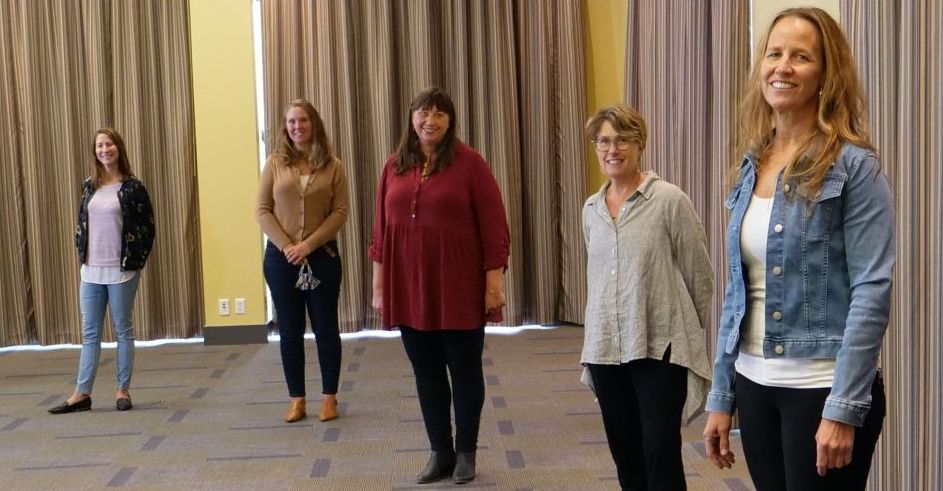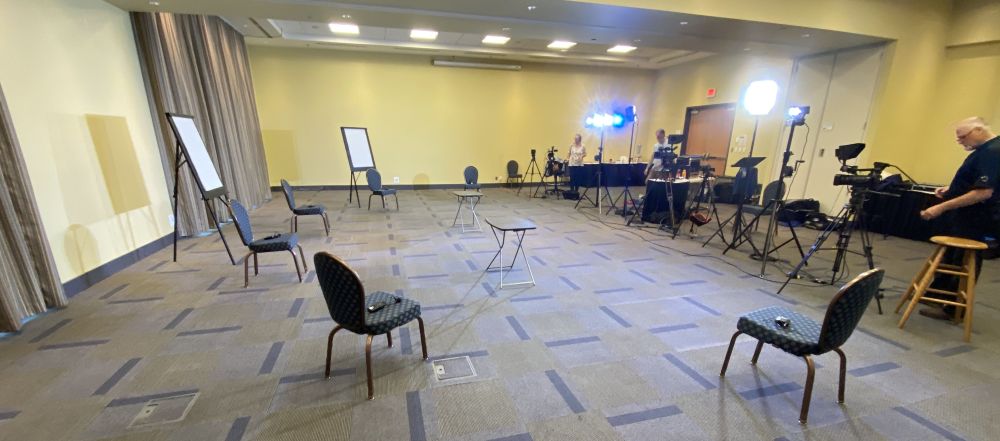Moving Beyond a Zoom Webinar to Inspire an Audience
Note to Reader:
COVID has changed and challenged how we do outreach and peer-based education. In this edition of Waterbucket eNews, we preview how the Partnership for Water Sustainability and our collaborators have embraced the challenge, and moved beyond a Zoom webinar to create Watershed Moments, the Video Trilogy Series. Our vision is that the series will be a legacy educational resource.
The first module will be broadcast via YouTube on November 19. The video features a team of five women in conversation. They speak to inter-regional “collaboration in action” to reconnect land and water in altered landscapes. The five represent four regional districts on Vancouver Island. The five are program managers. They are doers who get the job done.
TO REGISTER:

This local government team representing four Vancouver Island regions kicks off the Video Trilogy Series with a facilitated conversation about “BC’s Climate Reality, Inter-Regional Collaboration & Actionable Visions” > from left to right: Julie Pisani (Nanaimo region), Darry Monteith (Comox Valley),Jody Watson (Capital Region), Kate Miller (Cowichan Valley), and Zoe Norcross-Nu’u (Comox Valley)
BC’s Climate Reality, Inter-Regional Collaboration & Actionable Visions: On November 19, learn from those who are in the front-lines and are leading regional programs that strive to reconnect land and water in altered landscapes
EDITOR’S CONTEXT:
“I am a member of a team representing the stream stewardship sector and three levels of government. For the foreseeable future, we will be relying on virtual forums to bring audiences together for peer-based education. In the age of COVID, how does one inspire an audience over a computer? Addressing this existential challenge was our starting point for re-imagining the third in the Vancouver Island Water Stewardship Symposia Series as a virtual event,” states Kim Stephens, Waterbucket eNews Editor and Executive Director, Partnership for Water Sustainability in British Columbia.
 “Very quickly we ruled out going down the Zoom webinar pathway. Zoom is simply not conducive to the natural and spontaneous interaction among speakers that we wished to achieve. We decided that each of our three teams, one at a time, had to be in the same room in order for them to have a proper conversation among themselves.
“Very quickly we ruled out going down the Zoom webinar pathway. Zoom is simply not conducive to the natural and spontaneous interaction among speakers that we wished to achieve. We decided that each of our three teams, one at a time, had to be in the same room in order for them to have a proper conversation among themselves.
“We looked to TED Talks for inspiration. Why are they so successful in motivating audiences, we asked ourselves. TED Talks are very good at capturing a speaker’s passion and enthusiasm, we concluded. So, that is what we set out to do too! The videos are much more than talking heads. Interweaving of outdoor imagery adds a compelling visual dimension that draws the viewer into the conversation.
“In re-imagining the 2020 Symposium as the Video Trilogy Series, our vision is that the audience experience “in the moment” will be better than having a front-row seat at a live event. In a virtual sense, our audience will be up close and personal with our team members. All that will be missing from the experience will be the conversations that happen spontaneously during networking breaks, when delegates share their immediate reactions to what they just heard.”

Watershed Moments, the Video Trilogy Series:
In the first module, to be broadcast on November 19, five women representing four regional districts on Vancouver Island speak to some of the shared and unique triumphs and challenges of their respective water stewardship initiatives
On November 19, a dynamic team of five women provide their insider insights into an array of water-centric initiatives and programs underway in four Vancouver Island regional districts, namely: Nanaimo, Cowichan Valley, Comox Valley, and Capital. In each region, water management initiatives are now into a second decade and ramping up.
Sharing and learning from each other helps these program managers and doers adapt concepts and approaches to the local context. The programs they lead are foundation pieces for restoring the water balance in an altered landscape.
Format for Facilitated Conversations
North Vancouver District’s Richard Boase facilitates three rounds of conversation on these topics: Adapting to a Changing Climate, Collaboration, and Actionable Visions. In the fourth round, each team member provides the audience with a takeaway message.
 “An analogy for these programs is building a bridge across a river,” summarizes Richard Boase. “The time to construct the foundation can seem like an eternity. But then, very quickly, the bridge superstructure takes shape as the pace of construction accelerates.
“An analogy for these programs is building a bridge across a river,” summarizes Richard Boase. “The time to construct the foundation can seem like an eternity. But then, very quickly, the bridge superstructure takes shape as the pace of construction accelerates.
“Expressed another way, it is essential to walk before you can run. Viewers will learn from the experience of the inter-regional team that there needs to be a water literacy and stewardship ethic in the community. This takes time to take root.”
Richard, moderator par excellence, has a deep understanding of the subject matter resulting from three decades of stewardship work through a local government lens, has an innate ability to ask the questions that get to the heart of the matter, shares his enthusiasm with panelists and audience alike and sometimes even surprises the organizers with impromptu action items.
Actionable Visions Explained
“At the end of the day, an actionable vision is driven by the line items that comprise each local government’s annual budget. The 4Cs – communication, cooperation, coordination and collaboration – are also essential ingredients,” continues Richard Boase.
“An actionable vision for land and water is driven by leadership that mobilizes people and partnerships, a commitment to ongoing learning and innovation, and so importantly a budget to back it up.”
|
|
15 metres x15 metres is the optimum size space, and also the minimum size, for a room that is required to house up to five cameras and up to 14 people, of whom six are seated in a semi-circle for a facilitated conversation. Five cameras are necessary because of the 2 metre spacing of speakers.
|



